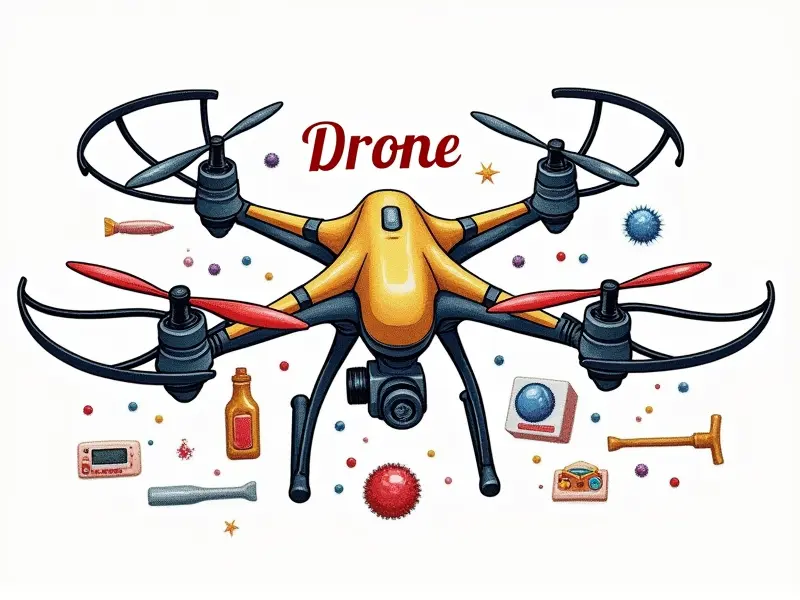RC airplane model history

Brief History of RC Airplane Models
The history of radio-controlled (RC) airplane models is a fascinating journey that spans over several decades. It began in the early 1900s with simple, hand-launched gliders and has evolved into sophisticated aircraft capable of aerobatic maneuvers and high-speed flight. RC airplanes have not only been a hobby for enthusiasts but also served as a platform for technological advancements.
Evolution of RC Aircraft Models
The evolution of RC airplane models is marked by significant milestones that reflect the changing technologies and materials used in their construction. From basic wooden frames to advanced composite structures, each era has brought new innovations and improvements to these aircraft.
Timeline of RC Plane Development
- 1920s-1940s: Early radio-controlled models were simple designs made primarily from balsa wood. Pioneers such as William H. Hillman and George F. Spratt experimented with basic control systems.
- 1950s-1960s: The introduction of transistor technology allowed for more reliable radio controls, leading to the development of more complex models capable of sustained flight.
- 1970s-1980s: Advances in materials science brought lightweight yet strong materials like fiberglass and foam into use. This period also saw improvements in electronic components such as servos and receivers.
- 1990s-Present: The advent of microcontrollers, GPS navigation systems, and digital telemetry has transformed RC airplanes into highly sophisticated machines with capabilities rivaling full-scale aircraft.
Key Events Shaping RC Airplane Design
Several key events have significantly impacted the design and functionality of RC airplane models:
- The development of more reliable radio control systems in the 1950s allowed for better maneuverability.
- The introduction of composite materials like carbon fiber and Kevlar increased structural integrity while reducing weight.
- Advancements in microelectronics during the late 20th century enabled smaller, more powerful onboard computers and sensors.
From Wood to Carbon Fiber: RC Planes
The transition from traditional wooden construction to modern materials has been a critical factor in the advancement of RC airplane models. Early models were predominantly made of balsa wood due to its lightness and ease of shaping, but as technology progressed, new materials offered superior performance:
Traditional Materials: Balsa Wood
Balsa wood was widely used for its lightweight nature and ability to be shaped precisely. However, it lacked durability compared to modern alternatives.
Modern Advancements: Carbon Fiber and Kevlar
- Carbon Fiber: This material is highly resistant to breakage and provides excellent strength-to-weight ratios, making it ideal for high-performance models.
- Kevlar: Known for its exceptional tensile strength, Kevlar adds rigidity without adding significant weight. It's often used in combination with carbon fiber for optimal performance.
Milestones in RC Plane History
The journey of RC airplanes includes numerous milestones that have shaped their development:
- 1950s: Introduction of transistor-based radio controls improved reliability and range.
- 1970s: Use of fiberglass and foam for construction led to more durable models capable of sustained flight.
- 1980s: Digital servos provided faster response times, enhancing maneuverability.
- 2000s: GPS navigation systems allowed precise control over flight paths and automated landings.
Historical Highlights in RC Plane Evolution
Several historical highlights stand out as pivotal moments in the evolution of RC airplanes:
- The invention of the first practical radio-controlled model by William H. Hillman in 1926.
- The introduction of transistor technology, which revolutionized control systems and reliability.
- The development of composite materials that transformed aircraft construction.
Classic vs Modern RC Airplane Designs
A comparison between classic and modern RC airplane designs reveals significant differences:
- Classic Models: Typically made from wood, these models were simpler in design but required skilled craftsmanship. They often featured basic control systems with limited maneuverability.
- Modern Designs: Utilize advanced materials like carbon fiber and Kevlar for superior performance. Modern planes are equipped with sophisticated electronics including GPS navigation and digital telemetry.
Influential RC Airplane Models Over Decades
Several influential models have left a lasting impact on the hobby:
- 1950s: Hillman's Model A-2 - One of the first practical radio-controlled models, it set the stage for future innovations.
- 1970s: Great Planes Super Cub - Known for its durability and ease of assembly, this model became a staple in RC communities.
- 2000s: E-flite UMX P-51 Mustang - A micro-scale replica with GPS navigation, it exemplifies modern advancements in miniaturization and technology integration.
Innovations Shaping RC Airplane Design
The evolution of RC airplane models has been driven by numerous innovations:
- Microcontrollers: Enabled precise control over flight dynamics, allowing for complex maneuvers.
- Digital Telemetry Systems: Provide real-time data on aircraft performance and health, enhancing safety and reliability.
Key Moments in RC Aircraft Development
Several key moments have defined the development of RC airplanes:
- The transition from wooden frames to composite materials marked a significant leap in structural integrity and performance.
- The integration of GPS navigation systems has transformed flight planning and execution, making RC flying more accessible and precise.
Conclusion
The history of radio-controlled airplane models is rich with innovation and progress. From early wooden gliders to modern high-tech marvels, each era has contributed unique advancements that have shaped the hobby into what it is today. As technology continues to evolve, we can expect even more exciting developments in RC aircraft design.

